Choosing the right email marketing platform is crucial for business owners looking to drive sales and grow their customer base. In this Drip vs TinyEmail comparison, we’ll look at Drip and TinyEmail – two popular options with some key differences.
Drip, created by Leadpages, is an intuitive platform great for beginners. TinyEmail takes a more advanced approach with robust segmentation and automation features.
To help you decide which solution is best for your business, we will compare the two across several factors: market position, ease of use, design customization, features, website performance, customer support, pricing, and reputation. By the end of this objective and comprehensive analysis, you should be able to confidently select the platform that aligns with your budget, skills, and business goals.
1. Understanding the Basics
Drip was founded in 2013 by co-founders Rob Walling and Mike Perham as a simple, beginner-friendly alternative to complex email service providers. It is now a subsidiary of Leadpages. Drip has over 10,000 customers and a 4.5 rating on Capterra.
TinyEmail began in 2020 which makes it a relatively new kid on the block. It was founded by marketing and copywriting expert Seamas Egan who regularly contributes to big publishing houses like Huffington Post and Forbes. The platform focuses on delivering enterprise-level features for small businesses. TinyEmail has a smaller but growing customer base and a 4.8 rating on TrustPilot.
Both platforms have active Facebook communities:
These groups allow users to get feedback, share best practices, and get questions answered by peers and company reps. Joining can provide valuable insights from real users of both platforms.
2. Features and Functionality
With the right email marketing software, you can create targeted campaigns, automate workflows, and track results – taking your business growth to the next level. Let’s dive in and see how Drip and TinyEmail stack up.
Automation
Drip
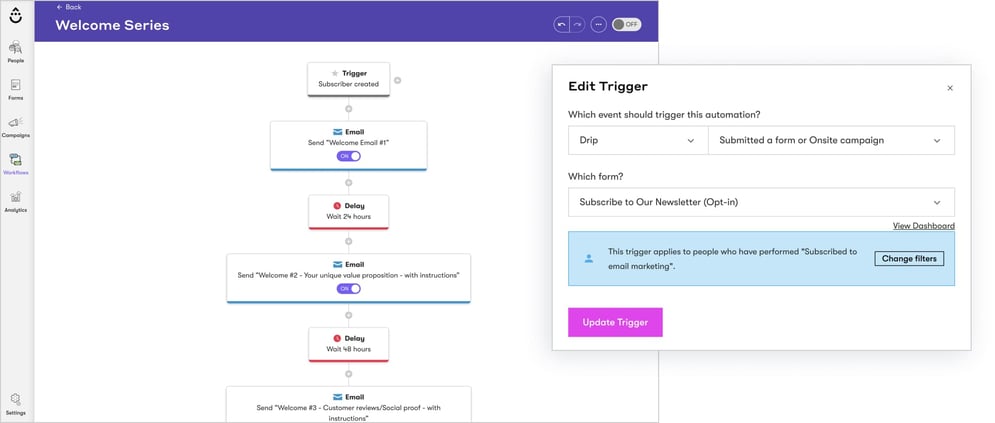
Drip provides robust automation features that allow you to set up triggered email workflows based on subscriber actions. You can create sequences that send a predetermined series of emails when a subscriber signs up, makes a purchase, or triggers another custom event.
With Drip’s visual workflow builder, you can easily set up if/then logic to segment your lists and customize the subscriber journey. For example, you could set up one workflow path for subscribers who abandon their cart, and a different path for those who complete a purchase.
Other advanced automation features include lifecycle campaigns which send emails based on date-based triggers like the anniversary of signup or the date of the last purchase.
Drip also offers behavioral targeting to send emails when a subscriber visits a certain page or clicks a link. You can use tags and segments to dynamically group subscribers based on behaviors, interests, or attributes and then target them in campaigns.
A/B testing allows you to test different email content, subject lines, send times, and more to optimize your campaigns. Finally, API integrations connect other tools like your CRM or e-commerce platform to trigger emails based on actions there.
Overall, Drip provides a wide range of automation capabilities in an easy-to-use interface. The flexibility to customize multi-step workflows and integrate data from other platforms makes it a powerful tool, especially for small businesses.
TinyEmail

TinyEmail also offers robust email automation with an enterprise-level feature set. You can create triggered campaigns based on dates, events, behaviors, and integrations just like Drip.
Some of TinyEmail’s standout automation features include multi-step campaigns with unlimited steps to set up complex, multi-message workflows with no limits and dynamic content to customize email content for each subscriber by pulling in data like their name, location, or purchase history.
TinyEmail also has smart lists to automatically group subscribers who meet certain criteria for targeted messaging along with transactional email templates to automate one-off emails like order confirmations or password reset emails.
You also get access to automation templates which are pre-built automation recipes for common subscriber journeys. Like other email marketing platforms, TineyEmail has Zapier integration to connect to over 3,000+ other apps to incorporate data and trigger emails.
While TinyEmail provides enterprise-level functionality, the interface can be more complex for beginners compared to Drip’s simple drag-and-drop workflow builder. However, TinyEmail offers unparalleled flexibility for advanced users.
Winner: Tie
Both email marketing tools offer excellent automation capabilities. Drip provides a simpler interface that is ideal for beginners, while TinyEmail offers more advanced tools for sophisticated workflows.
For most small businesses, either platform will provide the automation power needed to create targeted, personalized subscriber journeys. It comes down to your specific user preferences and comfort level with more complex interfaces.
Email Templates
Drip
Drip provides pre-designed email templates you can use to quickly create professional-looking emails. Templates are available for a variety of purposes including welcome emails, promotions, newsletters, and more.
The template editor makes it easy to customize colors, fonts, and design elements. You can also easily drag and drop your own content blocks like text, images, and buttons. Drip’s templating uses a WYSIWYG editor so you can see changes as you make them.
While Drip offers beautiful starting templates, the selection is relatively limited compared to other providers. Currently, there are around 50 templates available. You can request new templates, but can’t create or import templates yourself.
TinyEmail
TinyEmail provides hundreds of professionally designed email templates created specifically for small businesses. Categories include welcome emails, announcements, newsletters, promotions, follow-ups, and more.
Like Drip, you can easily customize templates by tweaking colors, fonts, and design elements in TinyEmail’s drag-and-drop editor. You can also save templates as drafts to reuse and duplicate existing templates to make new versions.
A standout feature is TinyEmail’s template personalization. You can insert merge tags to pull in subscriber data to customize emails for each recipient. For example, dynamically inserting a subscriber’s name or purchase history info.
While TinyEmail provides more template choices out-of-the-box, the editor interface has a steeper learning curve than Drip’s simple WYSIWYG editor.
Winner: TinyEmail
With its vast template library of professionally designed options, TinyEmail is the winner when it comes to email templates. The beautiful, business-specific templates and personalization features provide excellent value, especially for small business owners without design expertise. While Drip’s editor is simpler to use, the very limited template selection is a drawback.
Segmentation
Drip
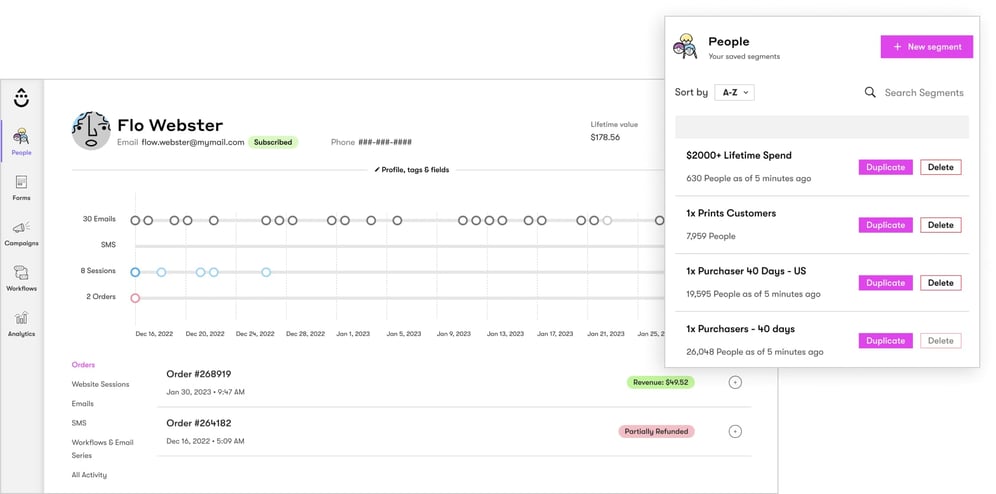
Drip allows you to segment your subscriber lists so you can send targeted email marketing campaigns. You can segment based on attributes, behaviors, and other properties. You can create segments to target specific groups for more personalized and relevant messaging.
Drip offers both basic segmentation using tags as well as more advanced options. You can segment by attributes like email address, name, or custom fields added via API or integrations. Behavioral segmentation analyzes subscriber actions like email opens, link clicks, purchases, and more.
Key segmentation features include a drag-and-drop workflow builder to visually create multi-step segmentation logic and dynamic segments that update automatically based on subscriber data.
Drip also offers powerful segment matching to build segments using AND/OR operators and combine multiple criteria along with lifecycle segmentation based on subscriber lifecycle stages. Finally, API access allows you to incorporate external data for advanced segmentation.
While powerful, Drip’s segmentation does involve building segments manually. It lacks browser-based segmentation where you visually select criteria.
TinyEmail
TinyEmail also provides robust segmentation capabilities for sending targeted, personalized email campaigns. You can create segments based on subscriber attributes, behaviors, and activity within your email workflows.
TinyEmail makes it easy to segment by criteria like email domain, opened/clicked specific emails, date subscribed, and more.
Key features include a visual segment builder to interactively create segments with a point-and-click selection of criteria and unlimited segments with the ability to combine segments using boolean logic.
TinyEmail also offers dynamic and static segments based on real-time data versus fixed criteria along with browse-based segmentation to visually inspect and select groups of subscribers who meet criteria. Finally, integration with e-commerce platforms allows you to segment by purchase data.
With its visual tools and browser-based segmentation, TinyEmail makes it extremely easy to drill down into your list and create targeted segments compared to Drip’s more manual approach.
Winner: TinyEmail
With its visual segmentation builder and browser-based tools that make dividing up your subscriber list intuitive and simple, TinyEmail comes out ahead for its segmentation capabilities compared to Drip’s more manual approach. TinyEmail makes it easy for novice users to slice and dice their lists for targeted campaigns.
Analytics
Drip
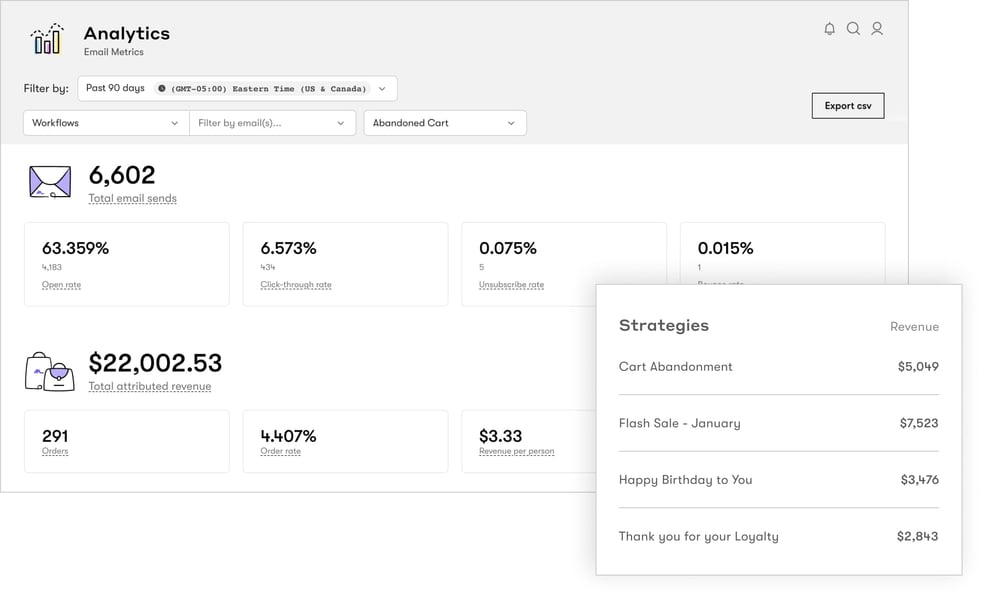
Drip provides detailed analytics to help you understand and optimize your email marketing campaigns. The main analytics dashboard shows high-level engagement metrics like open, clickthrough, and unsubscribe rates. You can filter by date ranges and email types.
Drip also tracks more detailed metrics like email rendering across devices and clients to identify display issues, click maps showing where subscribers click in your emails, and links report tracking clicks on individual links in your emails.
Drip also provides email activity tracking opens, clicks, and unsubscribes subscriber-by-subscriber along with bounce tracking with categorization by type of bounce (hard, soft, block). You also get A/B testing capabilities to test and compare the performance of different versions.
While powerful, Drip’s analytics focus on email campaign data. There are limited options for integrating or comparing analytics with your website, ads, or other marketing efforts.
TinyEmail
TinyEmail provides enterprise-level email analytics and custom reporting capabilities. The analytics dashboard displays engagement rates, opens, clicks heatmaps, and more.
Some standout TinyEmail analytics features include integration with Google Analytics to connect email and website analytics in one dashboard, a customizable reports builder to design reports with any metrics you need, and advanced segmentation of reports by campaign, date, message type, and other filters.
TinyEmail also provides an email activity timeline showing all subscriber actions chronologically along with automated report PDF exports by email to stakeholders. You also get A/B testing tools and reports to identify top-performing email variants.
While Drip covers email campaign analytics well, TinyEmail expands the scope by connecting email to your broader marketing analytics for a more complete view of subscriber engagement and ROI.
Winner: TinyEmail
With broader analytics capabilities like Google Analytics integration and custom reporting, TinyEmail wins for providing the most powerful and customizable analytics. While Drip excels at email campaign metrics, TinyEmail goes above and beyond by connecting email analytics to your other marketing efforts for maximum insight.
Unique Features
Drip

Drip has a few unique features that set it apart including ecommerce features such as built-in cart abandonment triggers, product recommendations, and order notifications that allow you to integrate ecommerce without a separate plugin.
Drip also offers Leadpages integration to combine landing pages and email as a Leadpages product. Other unique features include SMS marketing to send SMS messages and manage contacts alongside your email marketing.
You also get automation recipes which are pre-built automations for common workflows that make it easy to implement best practices, events tracking to track custom on-site events like product searches to trigger emails, and University which provides free courses on email marketing fundamentals within the app.
TinyEmail
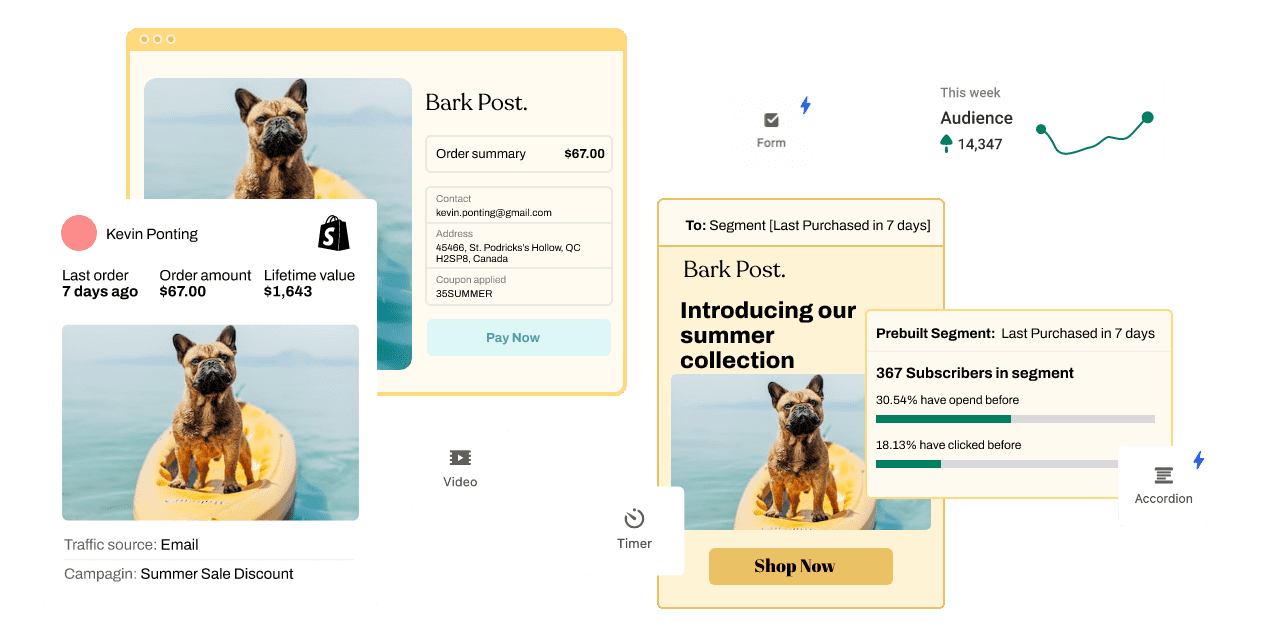
Some of TinyEmail’s standout unique features include a built-in blog to create a blog right inside your TinyEmail account and publish content quickly. TinyEmail also offers SMS marketing similar to Drip, allowing you to manage SMS and email in one place.
Other unique features include social posting to schedule and post your email content to social media, email drafts to save email drafts and schedule sending for a future date and time, and email scheduling to set a specific date and time for future email sends.
TinyEmail also offers print marketing to design and send direct mail postcards alongside your email campaigns, and Instagram integration to turn Instagram posts into newsletter content.
Winner: Drip
Drip wins when it comes to unique value-adding features. With its Leadpages integration, e-commerce capabilities, courses, and recipe automation, Drip simplifies email marketing for beginners. TinyEmail has some useful unique features like scheduling and Instagram integration, but they cater more to sophisticated users. For most small business owners, Drip’s additions provide more practical day-to-day value.
3. Ease of Use
Drip
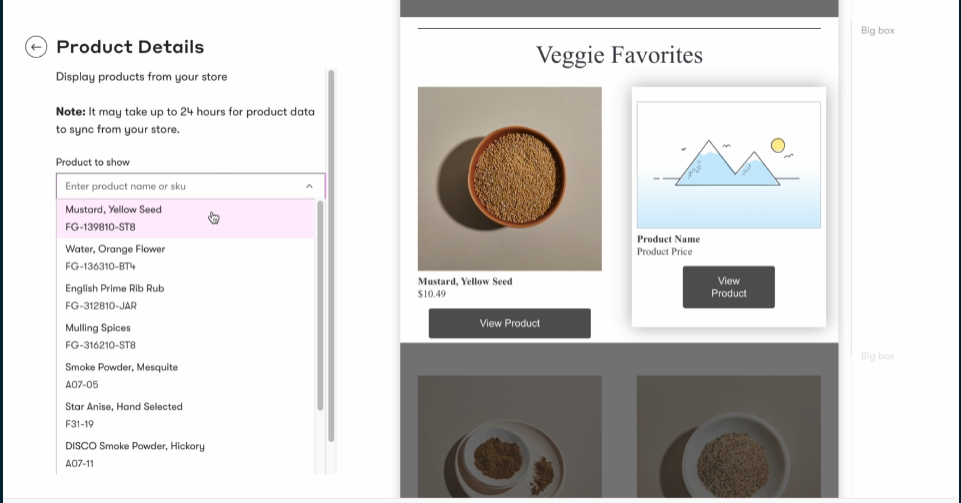
Drip is designed to be intuitive and easy to use, especially for beginners. The user interface is clean, simple, and well-organized. Key elements you need like your campaign workflow, analytics, and subscriber management are conveniently located in the sidebar navigation.
Within campaigns, setting up emails, automation, segments, and other core functions uses a visual drag-and-drop builder that is very user-friendly. Those without coding experience can quickly build complex workflows.
The learning curve is relatively shallow. Drip offers a number of in-app courses, helpful walkthroughs, and an active online community forum for assistance if you do get stuck.
Overall, Drip’s simple and intuitive interface makes the platform very accessible even for those newer to advanced email marketing and automation features. The visual workflow builder and drag-and-drop editor lower the barrier for non-technical users.
TinyEmail
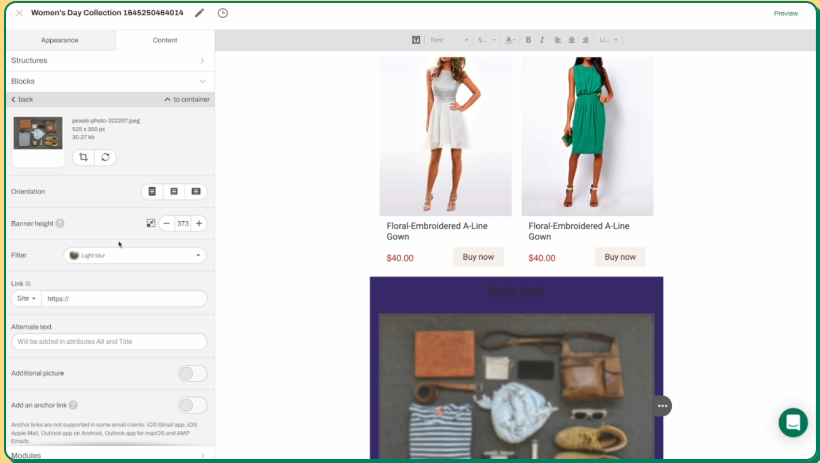
TinyEmail provides robust enterprise-level capabilities which does mean a more complex interface than Drip. There are more menus, settings, and configuration options which can be overwhelming for brand new beginners.
Within the builders, TinyEmail tries to simplify creating emails, automation, and segments using a drag-and-drop visual editor similar to Drip. However, the additional options and menus surrounding those builders have a steeper learning curve.
TinyEmail’s support resources like documentation, in-app messaging, and videos are very helpful for learning the platform if you invest time. However, the learning curve is higher compared to Drip’s very intuitive and beginner-friendly interface.
The added complexity allows greater flexibility for advanced users but makes TinyEmail less accessible for novices.
Winner: Drip
With its clean, visually-driven interface optimized specifically for beginners, Drip wins for overall ease of use compared to TinyEmail. The email marketing tool has a user-friendly interface, and while TinyEmail has more robust functionality, Drip’s intuitive drag-and-drop builder and workflows make picking up even advanced features much easier for new users not familiar with email marketing automation.
4. Email Deliverability
Drip
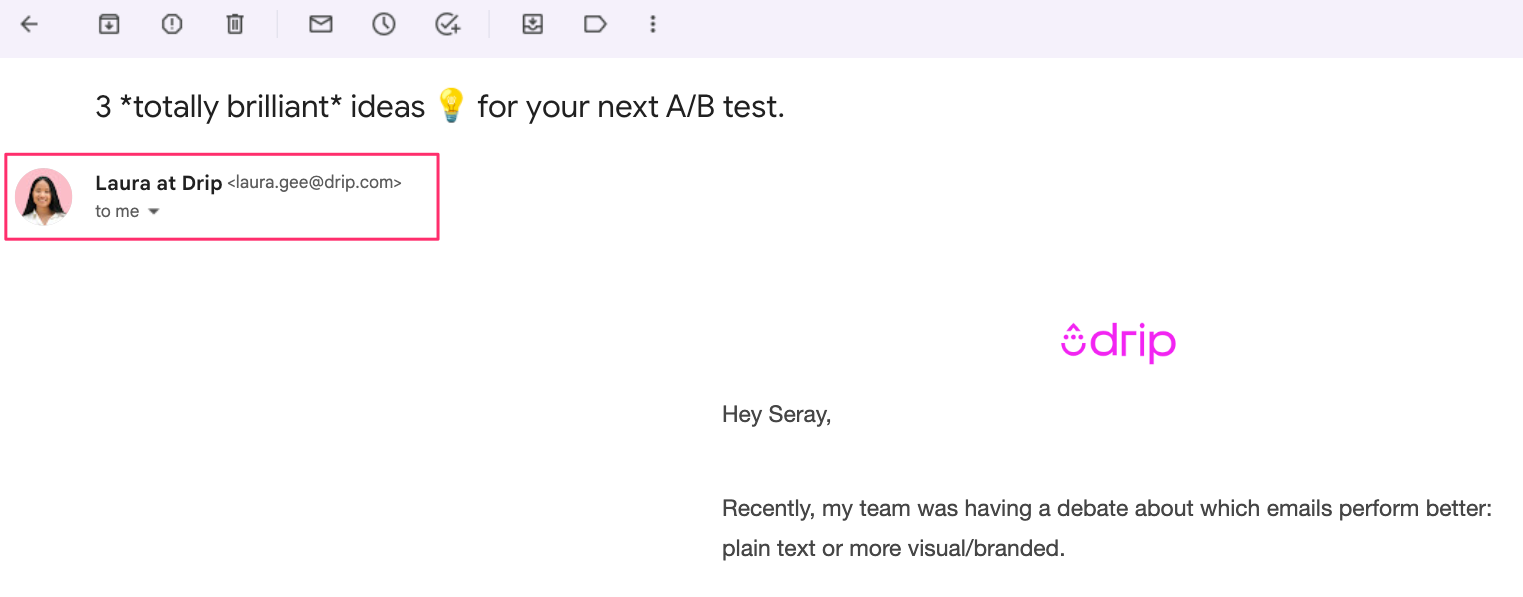
Drip uses a number of best practices to optimize email deliverability for successful Drip campaigns. All outgoing emails are authenticated using SPF, DKIM, and DMARC to verify legitimacy. Drip automatically warns you if your content, links, or sender identity could trigger spam filters. It also offers deliverability consulting and coaching to help improve campaigns.
Key deliverability features include dedicated IP addresses to protect the sender’s reputation and automated list cleaning to remove inactive subscribers. Drip also provides bounce handling and management tools, email previews across different clients to identify rendering issues, and reports identifying spam complaints and blocks for improvement.
Drip also maintains strong relationships with major ISPs to stay abreast of changing inbox standards. Deliverability guidance is a core part of their platform.
TinyEmail
TinyEmail incorporates deliverability best practices into its platform as well. Emails are authenticated with SPF, DKIM, and DMARC. You can access detailed logs on bounces, spam complaints, and blocks to optimize your campaigns. TinyEmail also offers sender score monitoring and email previews.
Some unique deliverability features include automatic list warming to gradually increase sending volume and click rate benchmarking compared to your industry averages. TinyEmail also has a dedicated deliverability team that manually reviews flagged emails and provides ongoing third-party deliverability audits.
Similar to Drip, TinyEmail actively maintains ISP relationships and monitors standards to avoid sending issues. Deliverability is central to their platform.
Winner: Tie
Drip and TinyEmail both incorporate email authentication, list management, inbox monitoring, and other best practices for excellent deliverability. Their core platform architecture and teams are focused on this critical element of email marketing.
For most small business owners, you can trust either email marketing solution to help you avoid spam filters and deliver your campaigns successfully.
5. Customer Support and Community
Drip
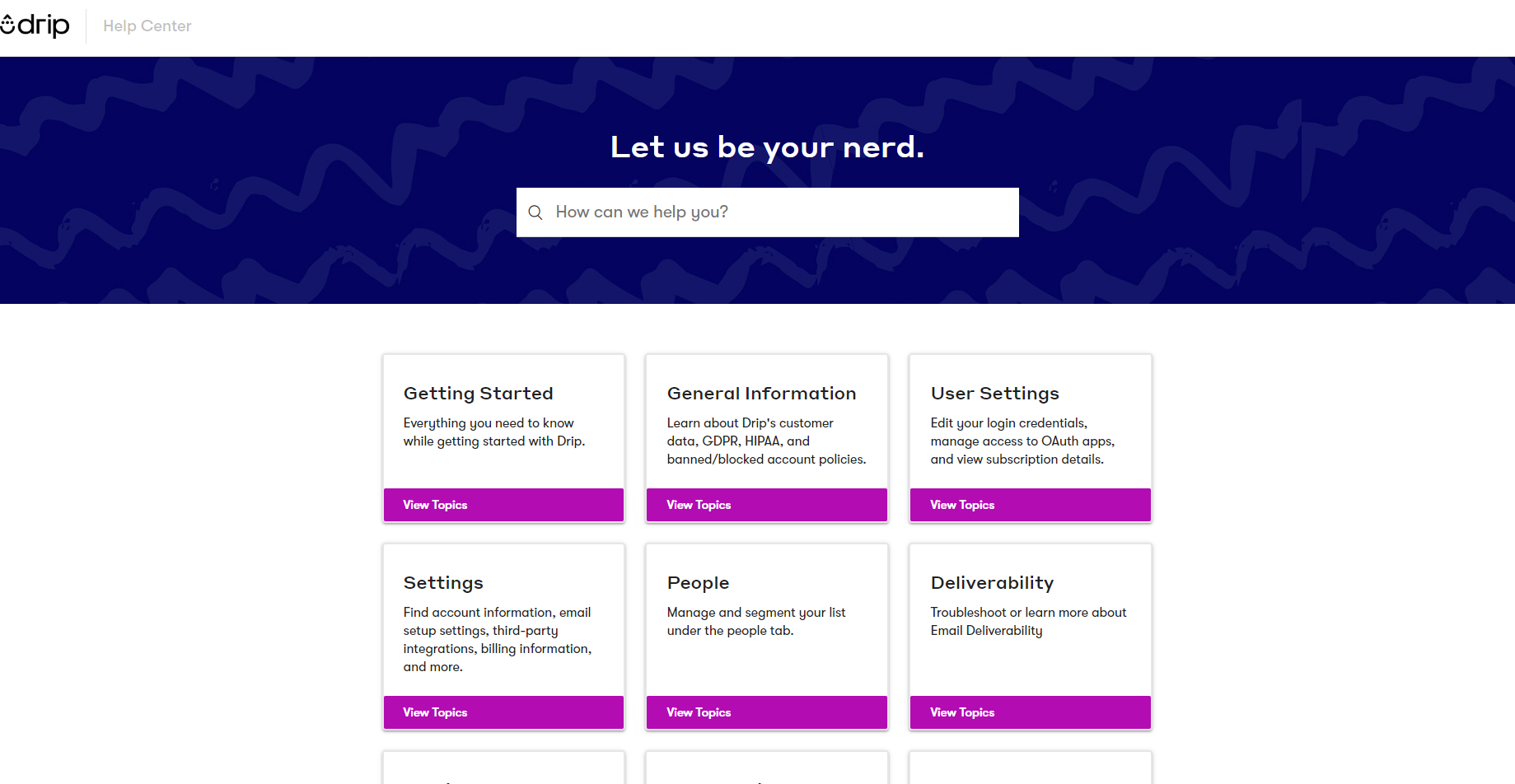
Drip provides the following customer support channels: Email support with 24-48 hour response time, live chat support during business hours, phone support via a dedicated number during business hours, extensive self-help resources including docs, videos, and webinars, and an active user community forum with staff engagement at community lead pages.
Drip’s customer support team has a reputation for being very responsive across their support channels. Support is free for all paid plans. The user community forum is an excellent resource, allowing users to interact with staff and each other to surmount hurdles and learn best practices.
TinyEmail
TinyEmail offers these customer service options: Email and in-app support ticketing with 24-48 hour response time, live chat support during business hours, a self-help library with articles, tutorials, and webinars, and an active Facebook user community with engagement from staff.
While TinyEmail does not offer phone support, their email and chat support is highly responsive, especially during business hours.
Their self-help content is also very comprehensive. The TinyEmail Facebook community is smaller than Drip’s forums but offers a venue for users to connect and get assistance from peers and TinyEmail team members.
Winner: Tie
Both Drip and TinyEmail offer a range of robust customer support channels including email, phone/chat, extensive self-help content, and active user communities. While their platforms differ, responsiveness and effectiveness across these channels are comparable based on reviews. Most small business owners should find their support needs sufficiently met by either provider.
6. Integrations
Drip
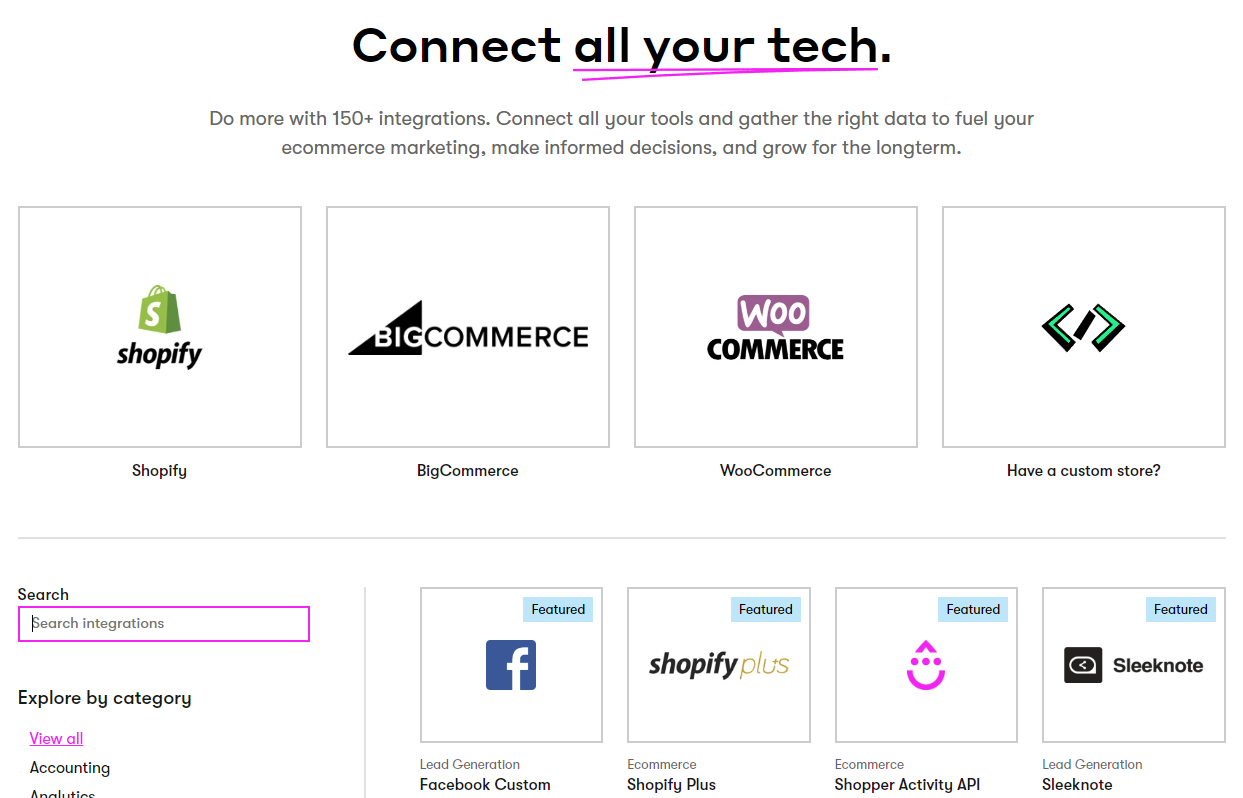
Drip offers a number of native integrations to connect your email marketing to other platforms and tools including CRM integrations to help you manage customer data, and the platform also has native support for integrating Drip subscriber and activity data with platforms like HubSpot, Zoho CRM, and Keap.
You also get e-commerce integrations with built-in integration with e-commerce-platforms like WooCommerce, Shopify, and BigCommerce; web analytics integration to integrate email analytics with Google Analytics to connect online and email data; and widget & popup tools integration to integrate opt-in forms and email capture from tools like Mailchimp, ConvertKit, and more.
Zapier integration is available to connect Drip to over 2,000+ apps via Zapier for advanced workflows. While Drip covers the major categories small businesses need, larger enterprises may require less common specialty integrations.
TinyEmail
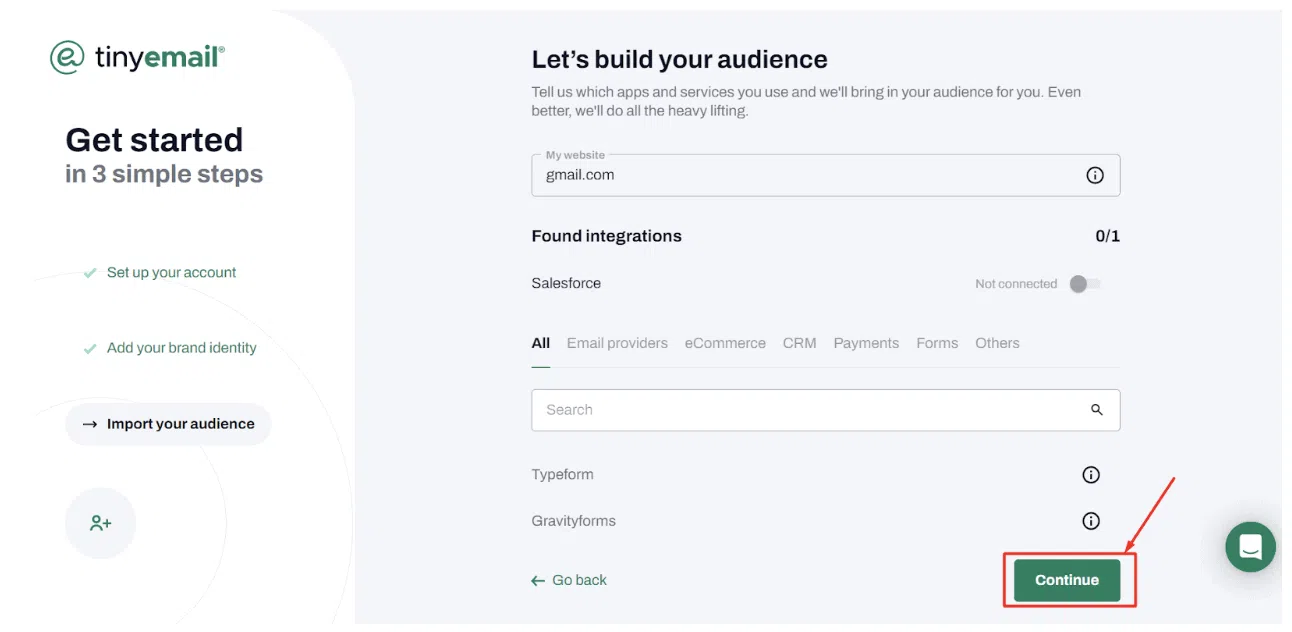
TinyEmail provides deep integration capabilities including CRM integrations to connect to CRM platforms like Salesforce, HubSpot, Pipedrive, and dozens more; e-commerce integrations to integrate with all major shopping carts and affiliate platforms; and events tracking to track on-site interactions with tools like Google Analytics.
You also get social media integration to integrate email campaigns with your social channels; Zapier to extend integrations to thousands of niche apps; and APIs for developers to leverage for advanced custom integrations.
TinyEmail essentially offers an open ecosystem capable of integrating with virtually any martech or data source thanks to its APIs and Zapier support.
Winner: TinyEmail
While Drip covers the basic integrations a small business would need, TinyEmail is the winner when it comes to ecosystem connectivity. With its extensive library of packaged integrations plus API and Zapier flexibility, TinyEmail can connect to virtually any app or data source. For larger or more complex businesses, TinyEmail is a clear winner.
7. Pricing
Drip
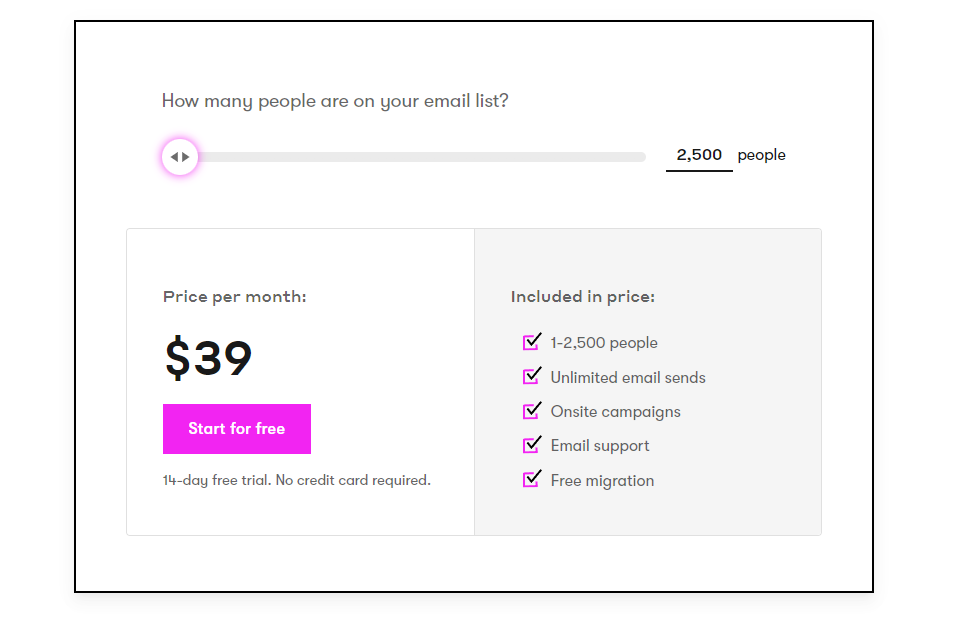
Drip has a simple pricing structure based on the number of contacts in your list. The lowest plan costs $39/month for up to 2,500 people. You can sign up for a free trial on the platform to test out the software before committing to a paid plan.
All plans include unlimited emails, and access to core features like automation, analytics, and integrations. Higher tiers offer more contacts, additional CRM and e-commerce integrations, and priority support.
Overall, Drip is competitively priced and its free tier provides excellent capabilities for early-stage businesses.
TinyEmail
TinyEmail has four self-serve paid plans:
- Free – $0/mo for 500 contacts
- Standard – $15/mo for unlimited subscribers
- Pro – $65/mo for additional features and advanced functionality
- Enterprise – Custom pricing for all the platform’s core features and unlimited resources
Higher tiers provide more contacts, sequences, and premium integrations. All plans include core features, though some advanced options like A/B testing require Business or Pro.
Compared to Drip, TinyEmail offers lower entry pricing though less robust features on its starter plan. Its higher tier pricing is competitive for the segments targeted.
Winner: TinyEmail
Based purely on price point, TinyEmail wins for having lower published rates, especially for its starter plan. The Standard tier at $15/month provides excellent value. However, Drip’s basic tier may be more cost-effective for early-stage businesses that require features like predefined and custom segments, custom domains, etc. At higher tiers, pricing is comparable based on the target customer size and needs.
8. Reviews and Reputation
Drip
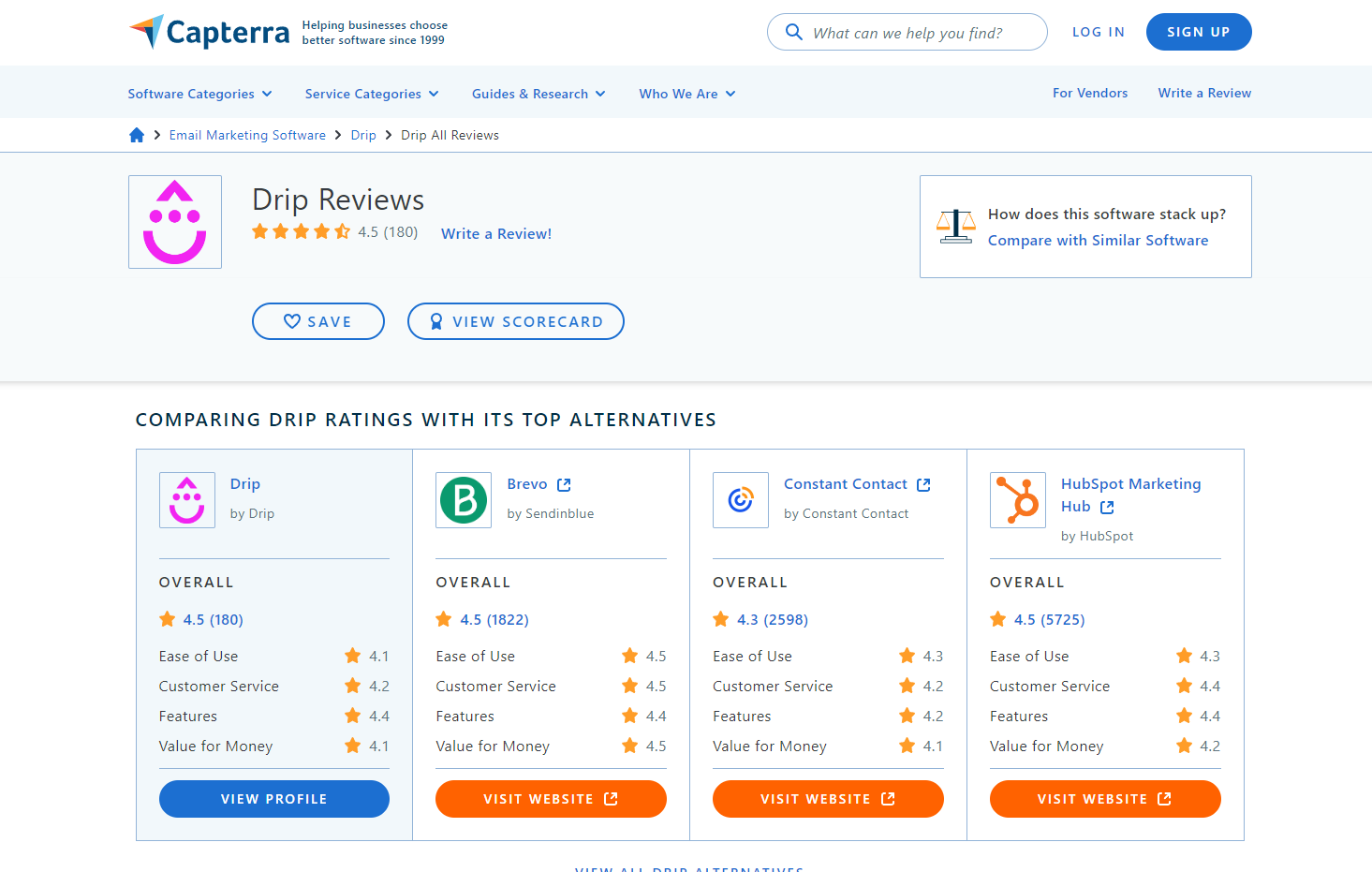
Drip earns consistently positive reviews and ratings across evaluation platforms:
- G2– 4.4/5 based on 450+ user reviews
- Capterra– 4.5/5 based on 180+ reviews
- TrustRadius– 8.4/10 from 100+ reviews
Common positives highlighted include Drip’s intuitive interface, excellent automation and segmentation capabilities, solid analytics and deliverability, and top-notch support.
Negative feedback is relatively minor but mentions occasional glitches with integrations, lack of more advanced features like dynamic content, and the learning curve for new users.
Overall, Drip’s reviews reflect a platform that excels at core email marketing capabilities while providing an easy-to-use experience.
TinyEmail
TinyEmail also garners positive sentiment but has a smaller reviewer footprint with 4.8 out of 5 stars based on 283 reviews on Trustpilot. Reviewers praise TinyEmail for its breadth of features, enterprise-scale capabilities, and excellent customer support.
Downsides called out include its complexity for new users and lack of phone support. Some reviews mention the need for more template options.
While TinyEmail has fewer total reviews, sentiment remains very positive overall based on its advanced feature set.
Winner: Drip
With significantly more customer reviews across the major platforms, Drip emerges as the winner for reputation. The overwhelmingly positive sentiment across nearly 1,500 verified reviews highlights Drip’s strengths in usability and supporting core email marketing needs for their target SMB user base. While TinyEmail also satisfies its users, Drip’s larger footprint better validates its position in the market.
9. FAQ’s
Drip FAQs
- Does Drip offer free trials or money-back guarantees?
Yes, Drip provides a 14-day free trial. They also offer a money-back satisfaction guarantee within the first 30 days. - Can I send emails to subscribers who haven’t opted in?
No, you can only send to consenting subscribers to comply with anti-spam laws. Drip helps you manage compliance. - How technical do I need to be to use Drip?
Drip is designed for beginners and is easy to use with no technical expertise required. Their visual interface and tutorials simplify getting started. - Does Drip integrate with social media?
Yes, you can integrate your email campaigns with Facebook and Twitter to extend your reach. - Can I switch email service providers easily?
Drip makes it simple to export your lists and campaigns for easy switching with no lock-in.
TinyEmail FAQs
- What email marketing features are included?
TinyEmail includes full-featured options like drag-and-drop builders, automation, A/B testing, analytics, integrations, and more. - Is there a limit on emails I can send?
No, all TinyEmail plans come with unlimited emails so you won’t be capped as your list grows. - Can I customize TinyEmail’s interface?
Yes, in your account settings, you can select different interface themes to suit your preferences. - Does TinyEmail offer a double opt-in subscription?
Yes, TinyEmail follows best practices including requiring double opt-in to build your email list. - Is there a free or trial version?
TinyEmail does not currently offer free trials, but you can cancel anytime if you’re unsatisfied.
Final Thoughts
Choose Drip if…
Drip is an excellent choice for small businesses and solopreneurs looking for an easy-to-use email marketing platform. The intuitive drag-and-drop editor and workflow builder make it accessible to non-technical users.
Drip also provides great templates, automation, and integration features to execute targeted campaigns even with no prior experience. If you want to get started with email marketing quickly and easily without complex enterprise-scale capabilities, Drip is a great fit.
Otherwise, a powerful and effective Drip alternative can be exactly what you’re looking for.
Choose TinyEmail if…
TinyEmail is ideal for more advanced email marketers who want maximum flexibility and customization. Its extensive features, segmentation abilities, and integrations cater to sophisticated email programs.
While more complex than Drip, TinyEmail provides enterprise-level power. If you have specialized needs or already have experience with email marketing automation, TinyEmail can supercharge your efforts with flexibility.
If you aren’t sure if TinyEmail is right for you, consider reading my favorite TinyEmail Alternatives.
Choosing the right email marketing platform is critical for effectively growing your business and reaching customers. Consider which solution best fits your budget, skills, and functionality needs so you can enhance your email marketing efforts. And feel free to ask any questions in the comments if you need help deciding!
